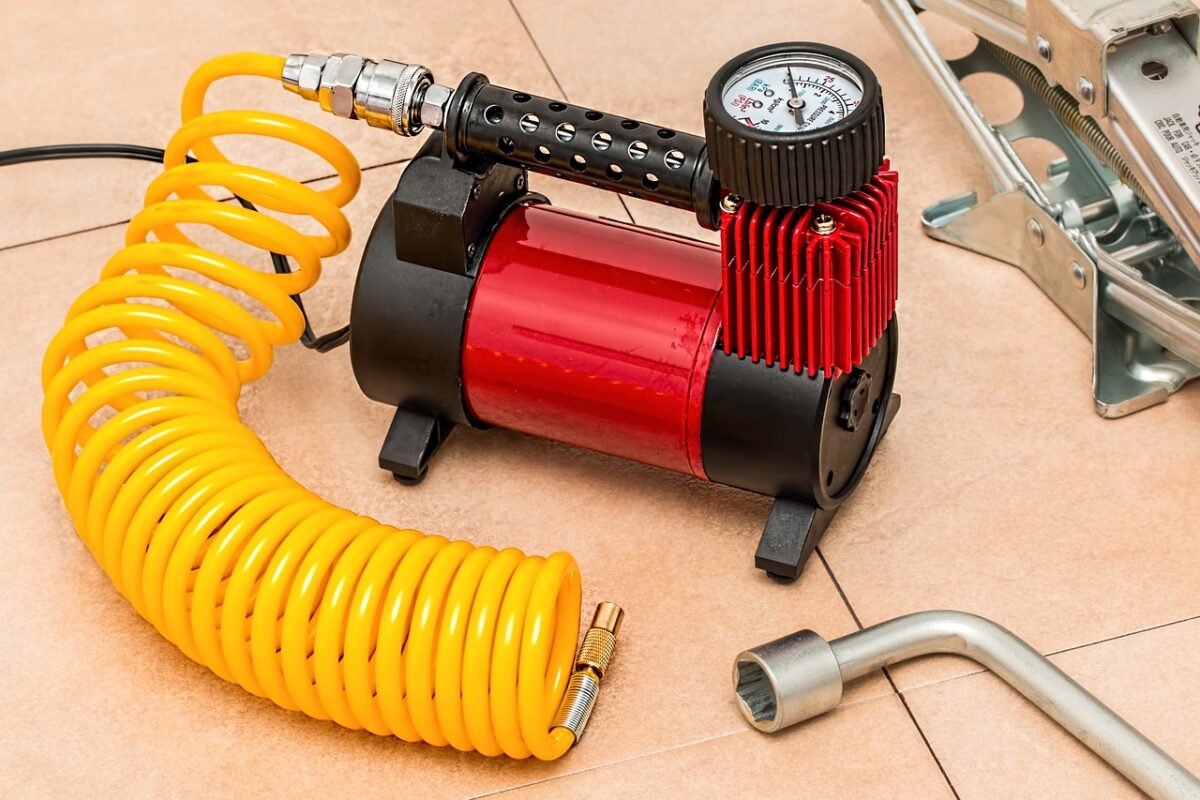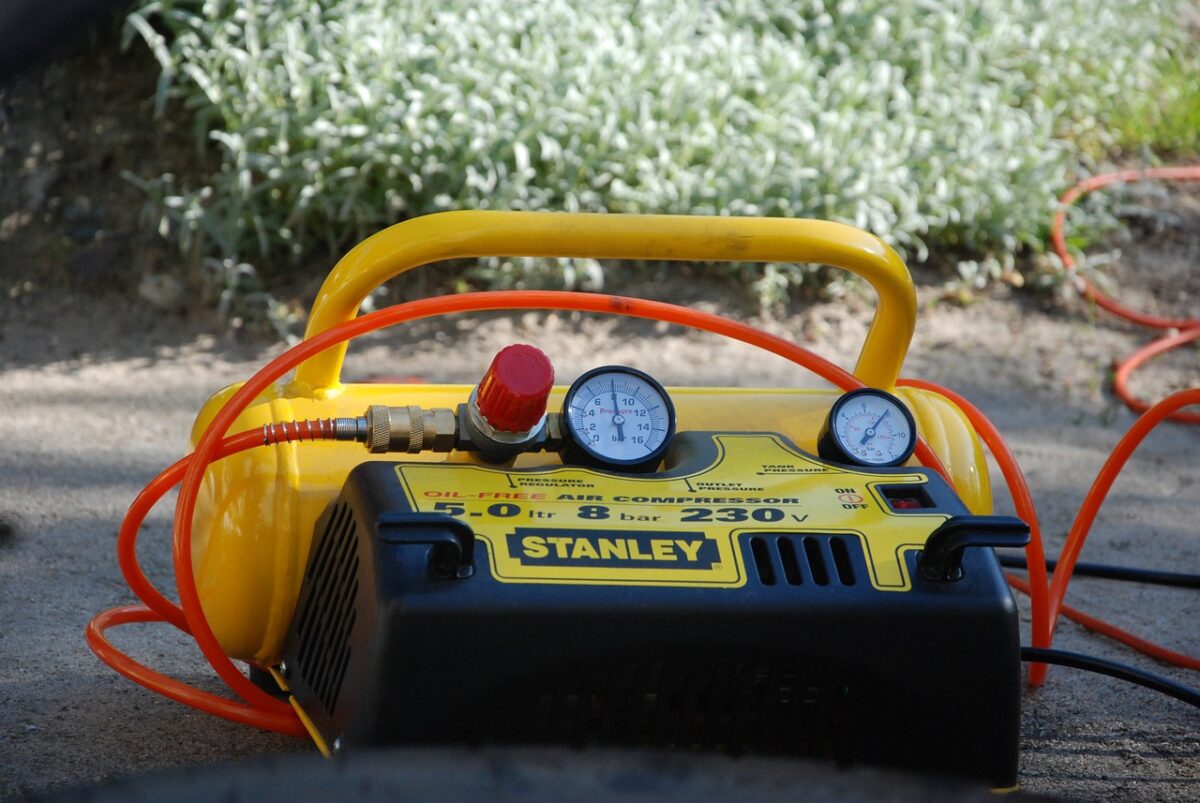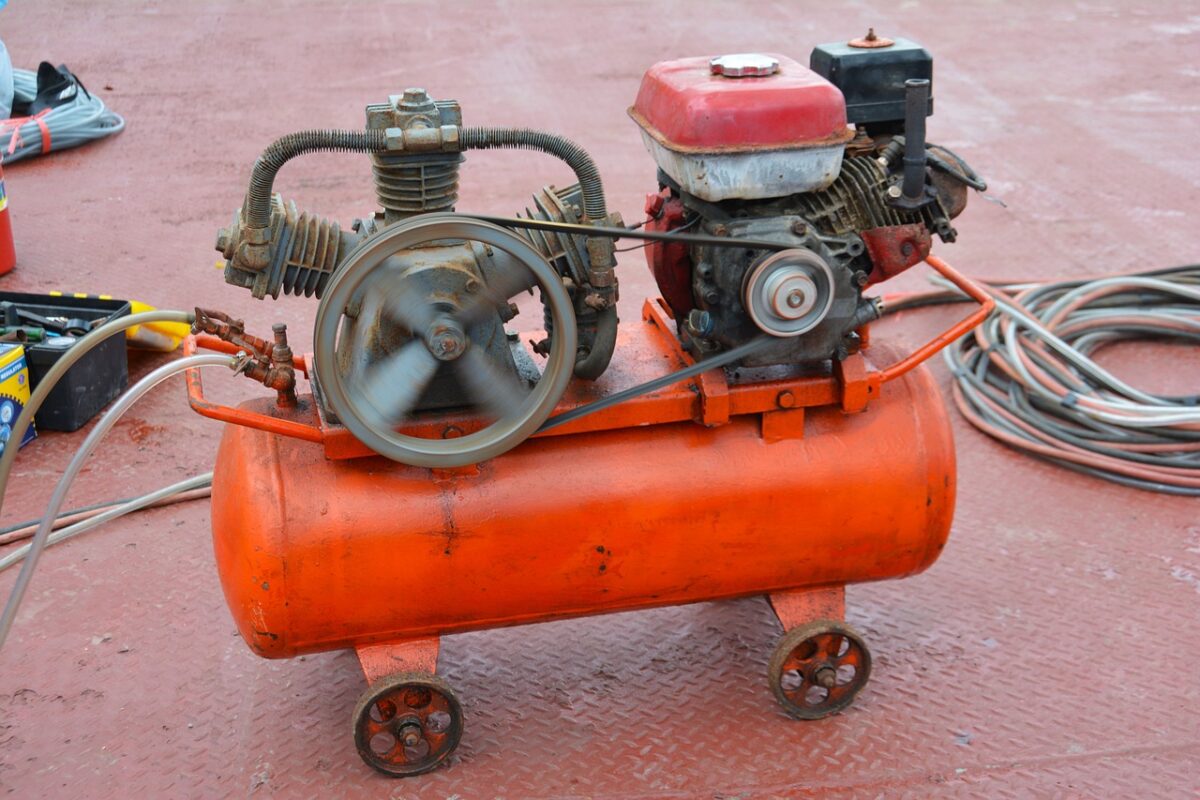How do I choose an air dryer for my air compressor? This is a common question among homeowners who need to upgrade or maintain their compressors. I’ve tested out various dryers over the years of doing DIY projects, and I also experienced firsthand what happens when the machine lacks a proper dryer.
If an air compressor doesn’t have a dryer, the combination of aerosol and water inside can damage and corrode parts of the machine. Consequently, the situation requires rust cleanup, especially on the tank. This is why I have come up with tips for selecting the best dryer to guarantee the efficiency and longevity of your compressed air system.
How Do I Choose an Air Dryer for My Air Compressor?
When choosing air dryers for air compressors, make sure to select the dryer type depending on your compressor’s size, installation compatibility, and specific needs for a project. You also need to consider the compressor capacity, air quality requirement, operating environment, and energy efficiency.

With this knowledge in hand, you could make an informed decision and enhance the efficiency of my compressor system while also preventing any moisture-related damage.
Consider the Type of Air Dryer
Over the years of fixing and maintaining compressors, I’ve tried various types of air dryers. Each type serves multiple purposes and has its own benefits. Let’s explore these options more in-depth.
Comparing Types of Air Dryers for Air Compressors
When choosing the right dryer for my air compressor, I first consider the specific needs of my project. Explore the best air dryer options for your air compressor, and you’ll find the perfect match for your DIY needs.
| Air Dryer Type | How It Works | Best For |
| Refrigerated | Lowers the temperature of the compressed air | Energy-efficient operation |
| Desiccant | Absorbent materials eliminate moisture | Areas with sensitive applications |
| Membrane | Semi-permeable membranes remove moisture | Compact and lightweight compressors |
| Deliquescent | Hygroscopic salt tablets remove moisture | Extreme temperature ranges |
| Point-of-Use | Installed directly on the air tool or device that needs dry air | Precise moisture control |
Refrigerated Air Dryers
Refrigerated dryers use a cooling system to lower the temperature of the compressed air. This causes moisture to condense and separate from the air. Its cooling process is similar to home refrigerators when condensing moisture.
This type of dryer is popular due to its affordability and effectiveness in general air drying applications. Some benefits include:
- Energy-efficient operation
- Lower operating costs
- Simple and low maintenance
Desiccant Air Dryers
One of the first dryers I’ve tried using is the desiccant. A desiccant air dryer utilizes absorbent materials, usually silica gel or activated carbon, to eliminate moisture from the compressed air.
This is why I normally use a desiccant dryer if I’m dealing with extremely dry air for specific applications. The advantages of using desiccant dryers are:
- Ability to achieve very low dew points
- Suitable for sensitive applications like painting or electronics
- Effective even in colder environments
- Situations that require extremely dry air like auto body work
Membrane Air Dryers
The membrane is another of my go-to dryers for compressors because it requires minimal maintenance. This makes it the perfect option for busy DIY seasons. It relies on semi-permeable membranes for moisture removal.
Compressed air is forced through these membranes. This allows water vapor to pass through while retaining the dry air. Here are some reasons to choose membrane dryers:
- Compact and lightweight design
- Minimal maintenance required
- Silently operate with no moving parts
Deliquescent Air Dryers
Deliquescent air dryers are among the most reliable types I’ve encountered. They use hygroscopic salt tablets to remove moisture from compressed air. The salt absorbs the water vapor and dissolves, forming a brine that can be drained.
This type is suitable for particular situations and can offer these advantages:
- Can function in extreme temperature ranges
- No power supply required
- Simple and cost-effective
Point-of-Use Air Dryers
Lastly, point-of-use air dryers are compact units designed to be installed directly on the air tool or device that needs dry air. These dryers can be of any type mentioned above yet are geared toward applications with limited space.
Here’s why you might consider using point-of-use dryers:
- Space-saving design
- Precise moisture control only for specific tools or devices
- Lower energy consumption compared to centralized systems
Determine the Size of the Dryer
A properly sized dryer will ensure your compressed air system functions efficiently and effectively for all your DIY projects. Different types of air dryers use other technologies and are better suited to different dew point requirements, so choosing the right one is crucial.
Determine the correction factor by multiplying temperature and pressure factors. Divide the total air flow rate by the correction factor to get the right-sized dryer.
Air Flow Rate
The key to sizing an air dryer is first understanding the air flow rate of your air compressor. To do this, you’ll want to check your compressor’s output in cubic feet per minute (CFM).
Never worry! You can typically find this information in the manufacturer’s documentation or the compressor itself.
Pressure Dew Point
Next, it’s essential to consider the pressure dew point required for your application. For example, a desiccant adsorption dryer is the best fit if your application requires a pressure dew point below three degrees Celsius or 37.4 degrees Fahrenheit.
The air quality requirement of your application is another important factor. You’ll need to determine the pressure dew point (PDP) of your compressed air. This indicates the water content in your compressed air.
The PDP refers to the temperature at which water vapor condenses and turns into water at the current working air pressure. Different applications may require different air quality levels, so keep that in mind.

Determine the Operating Environment
The operating environment can significantly affect the performance of an air dryer. This is why when the compressor room is hot, I move the dryer to a cooler location to boost its effectiveness and avoid moisture problems in my compressed air system. Likewise, a quality air compressor filter dryer also saves my system from rust buildup.
Consider factors such as inlet air temperature and ambient temperature. Warmer air holds more water vapor than cooler air so a higher temperature will reduce the drying capacity of your air dryer.
- Consider the inlet air temperature
- Take ambient temperature into account
Check for Energy Efficiency
It’s important to consider energy efficiency when choosing an air dryer. Different types of air dryers offer varying levels of efficiency.
Make sure to pick one that best suits your energy-saving goals and your available budget. Remember, investing in an energy-efficient dryer can result in long-term cost savings.
- Compare energy efficiency between different models
- Consider long-term energy-saving benefits

Know the Installation and Maintenance Requirements
Check if the dryer is compatible with the installation requirements and limitations of the compressor. Proper installation also ensures efficiency and longevity.
Here are some key points to consider for proper installation:
- Avoid hot air intake from the air compressor
- Use a wet receiver before the dryer
- Install a dry receiver after the dryer
- Make sure to include a moisture separator on the compressor
- Add high-quality pre-filters and after-filters for the air dryer
Related Questions
Why Should I Use a Compressed Air Dryer?
Using a compressed air dryer can help prevent water damage and contamination, ensuring the best results. When machines compress air, moisture and water vapor get trapped. This can cause issues in various applications, especially those needing dry air, like painting or sandblasting.
How Many CFM Do I Need for My Air Compressor?
To determine the right CFM for your air compressor, add the CFM requirements of all tools and devices, then multiply the total by 1.25 to 1.5. Consider the air tools and applications you’re using. This allows for extra capacity, ensuring your compressor can handle the demand without overworking.
What Type of Air Dryer Is Most Efficient?
When it comes to energy efficiency, cycling air dryers tend to be more efficient than non-cycling dryers. Their energy consumption adjusts based on the system’s load. Non-cycling air dryers are primarily suited for rotary screw compressors and are less energy-efficient overall.
Conclusion
When selecting the right air dryer for an air compressor, consider the type of dryer, your specific applications, and the operating conditions of your air compressor. With a little research and an understanding of your requirements, you can make an informed decision and keep your compressor system in top shape.
